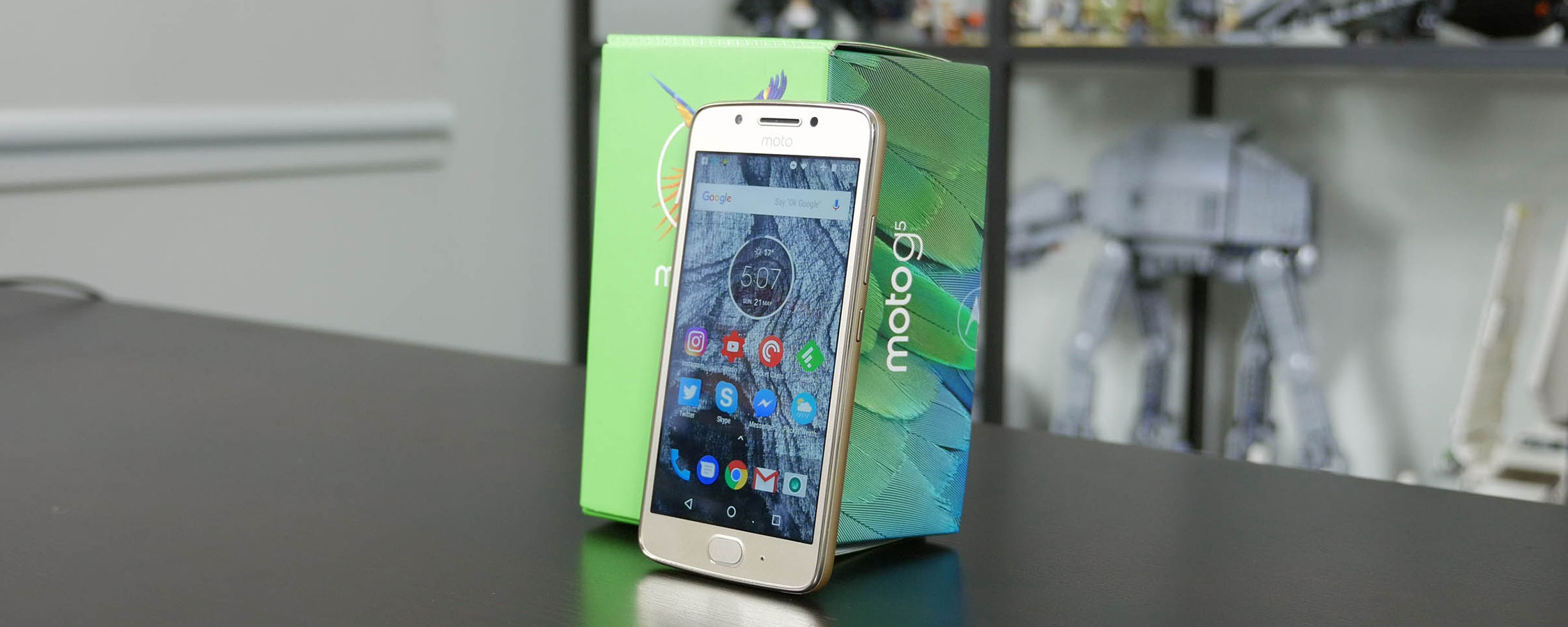Display
On both the Moto G5 and Moto G5 Plus, we're seeing 1080p IPS LCD panels; the G5 has a 5.0-inch display, while the G5 Plus is 5.2-inches. You do get slightly higher pixel density on the G5 (441 ppi versus 424 ppi), though both phones are crisp and clear to view. However, the G5 Plus does get superior Gorilla Glass 3 protection, while the G5 is limited to basic scratch-resistant glass.
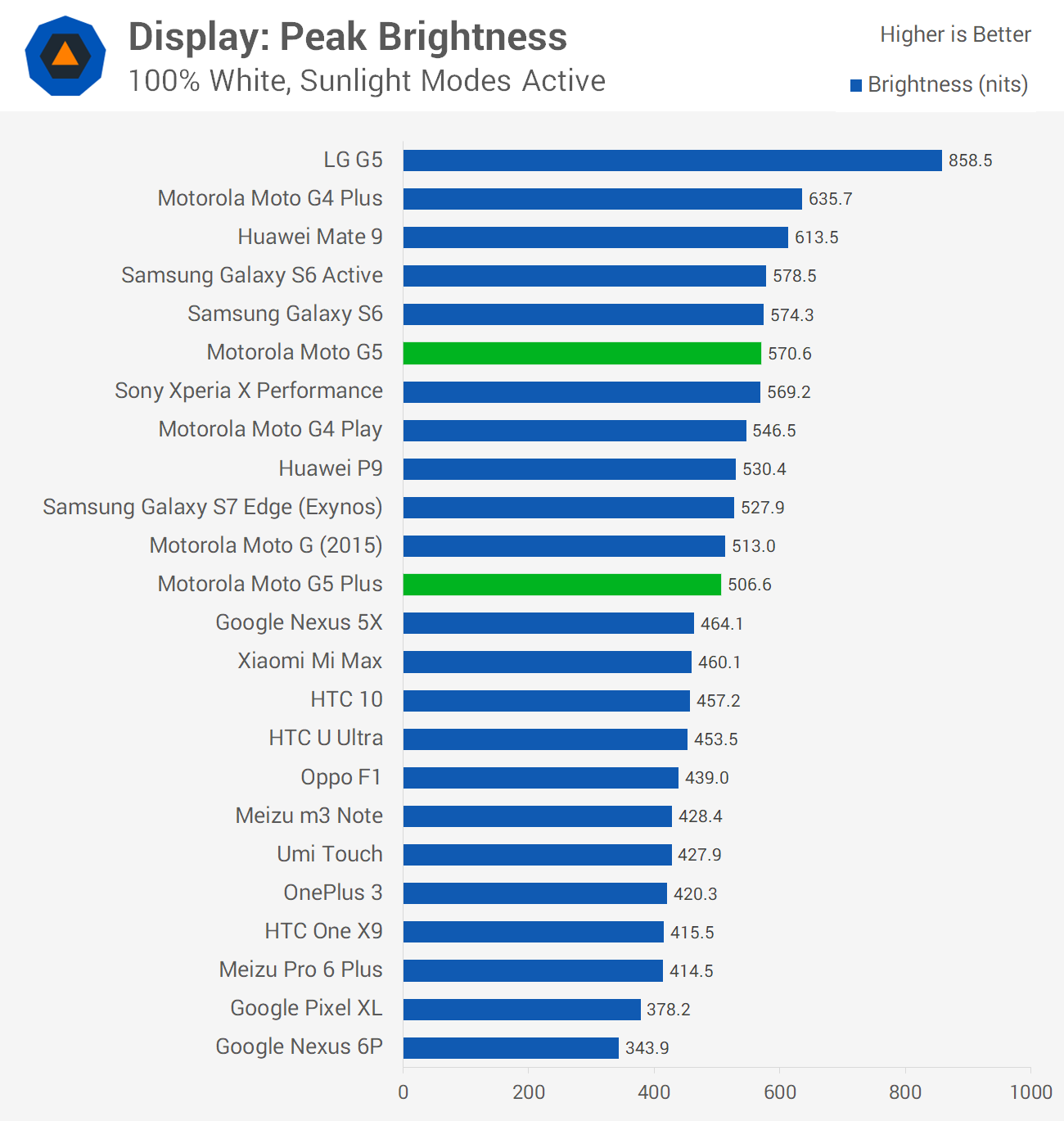
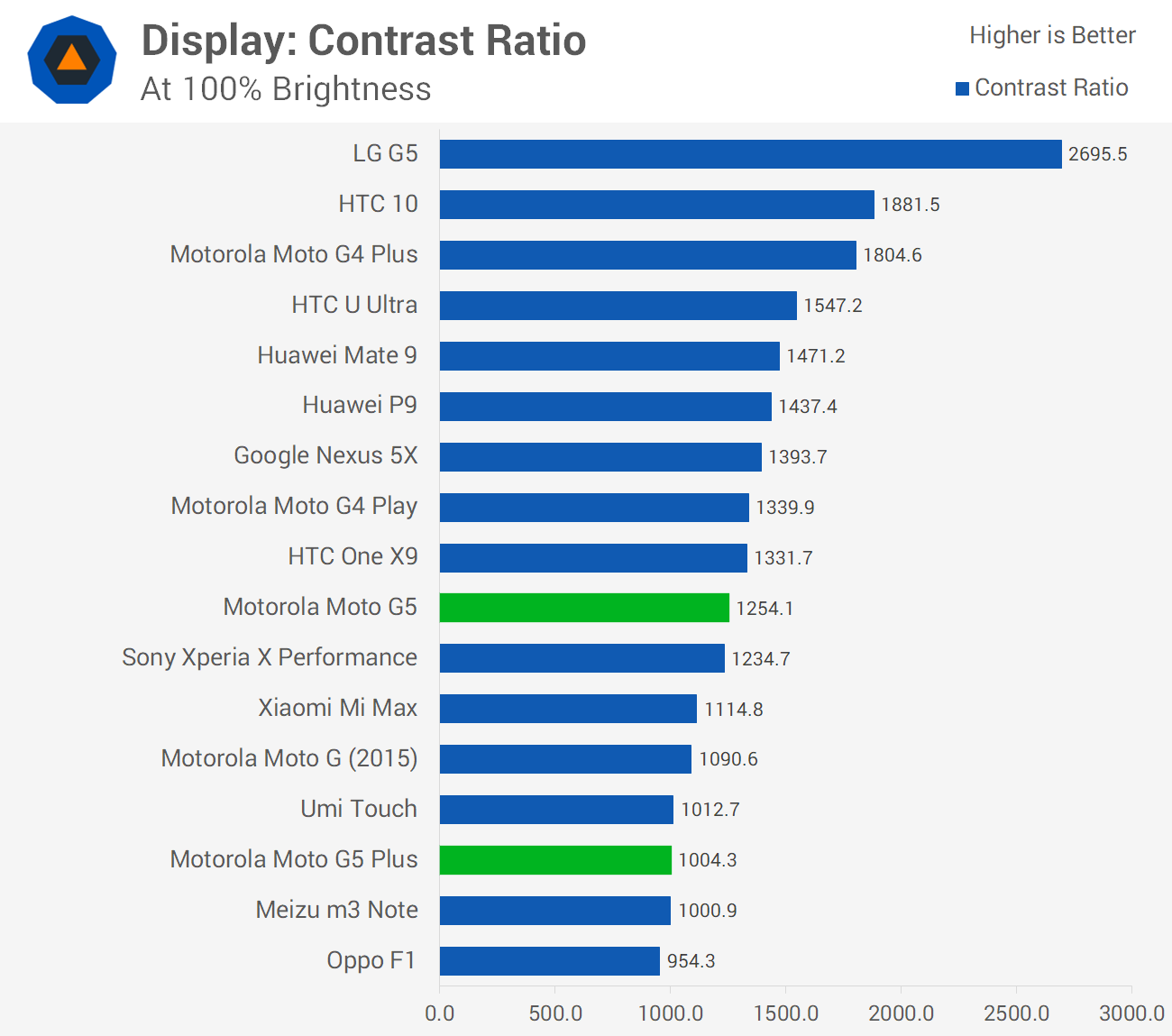
What surprised me during testing is how the Moto G5 has a better display than the Moto G5 Plus in nearly every facet. Both phones provide similar benefits from IPS panels, such as great viewing angles and good contrast ratios, but the G5 has a decent edge in accuracy and other aspects.
The G5's display is brighter and exhibits a greater contrast ratio than the G5 Plus. In fact the G5's peak brightness of 570 nits is very good for a smartphone, though the G5 Plus still manages to reach 500 nits.
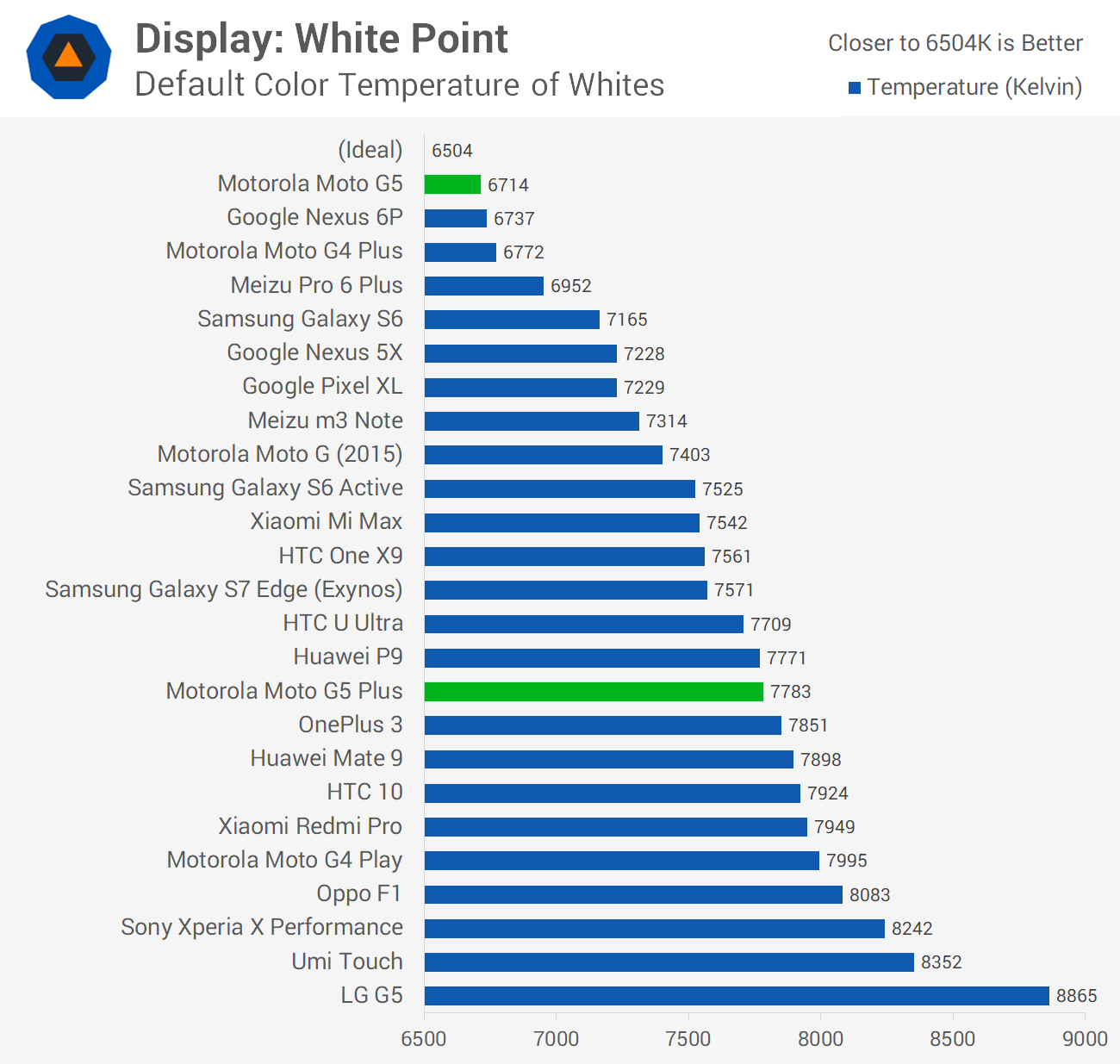
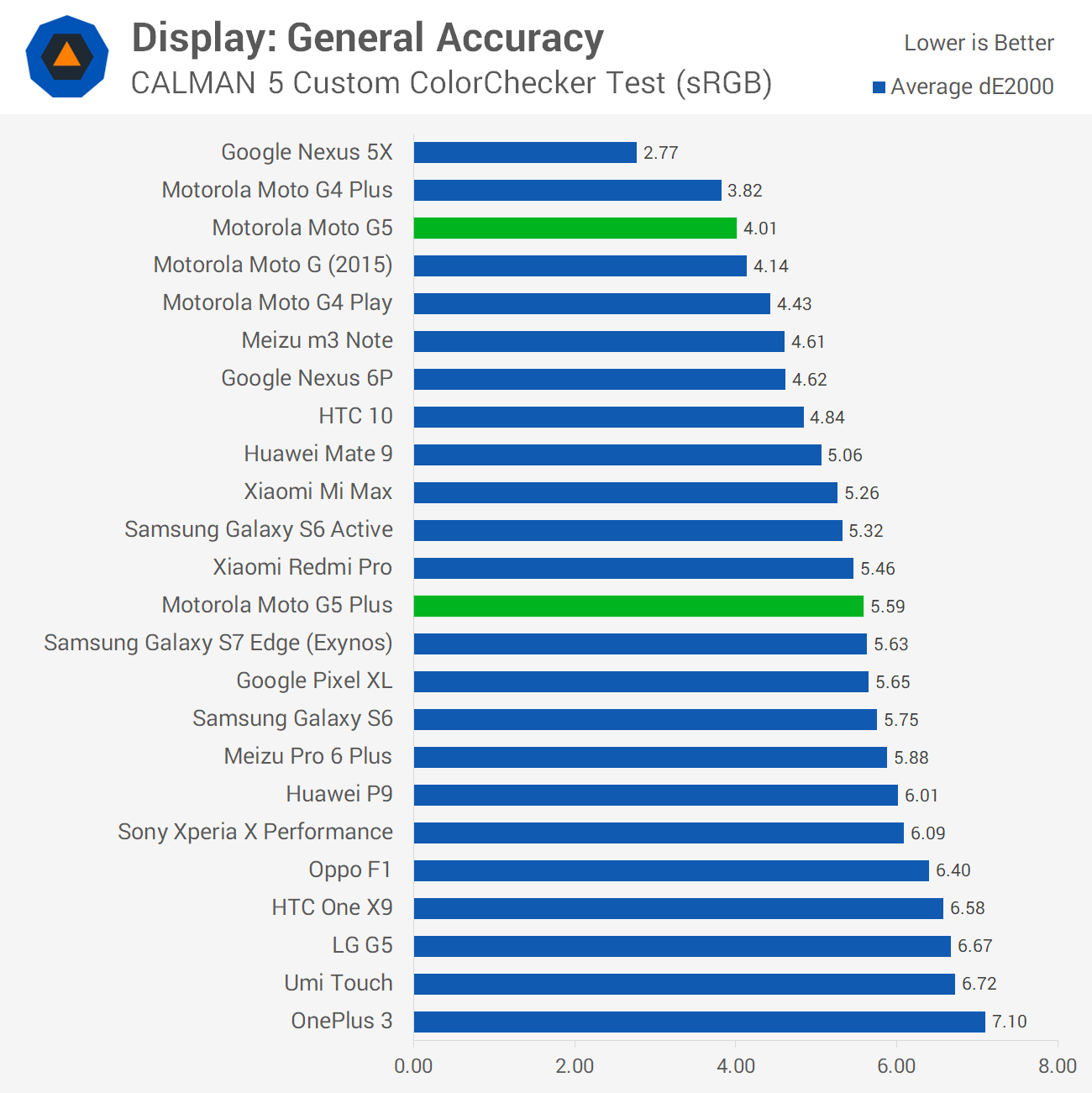
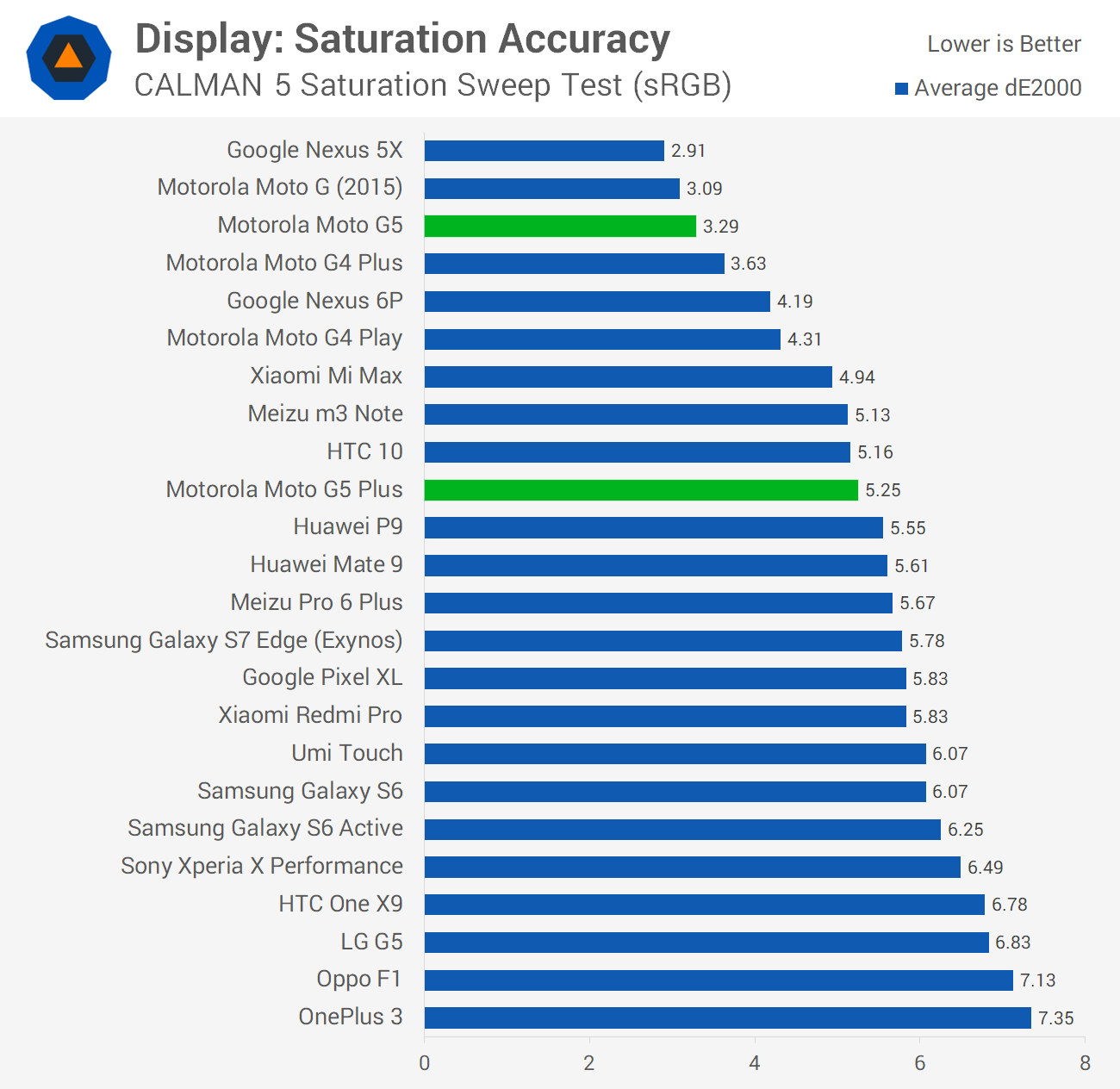
In terms of accuracy, the G5 is significantly better. The G5 Plus' display is too cool, whereas the G5 falls near the ideal color temperature value of 6504K. This assists with other aspects of accuracy: grayscale, saturation and ColorChecker performance is all superior, sometimes by a decent margin. It's not a perfectly accurate display out of the box, but it does a decent job for an entry-level handset.
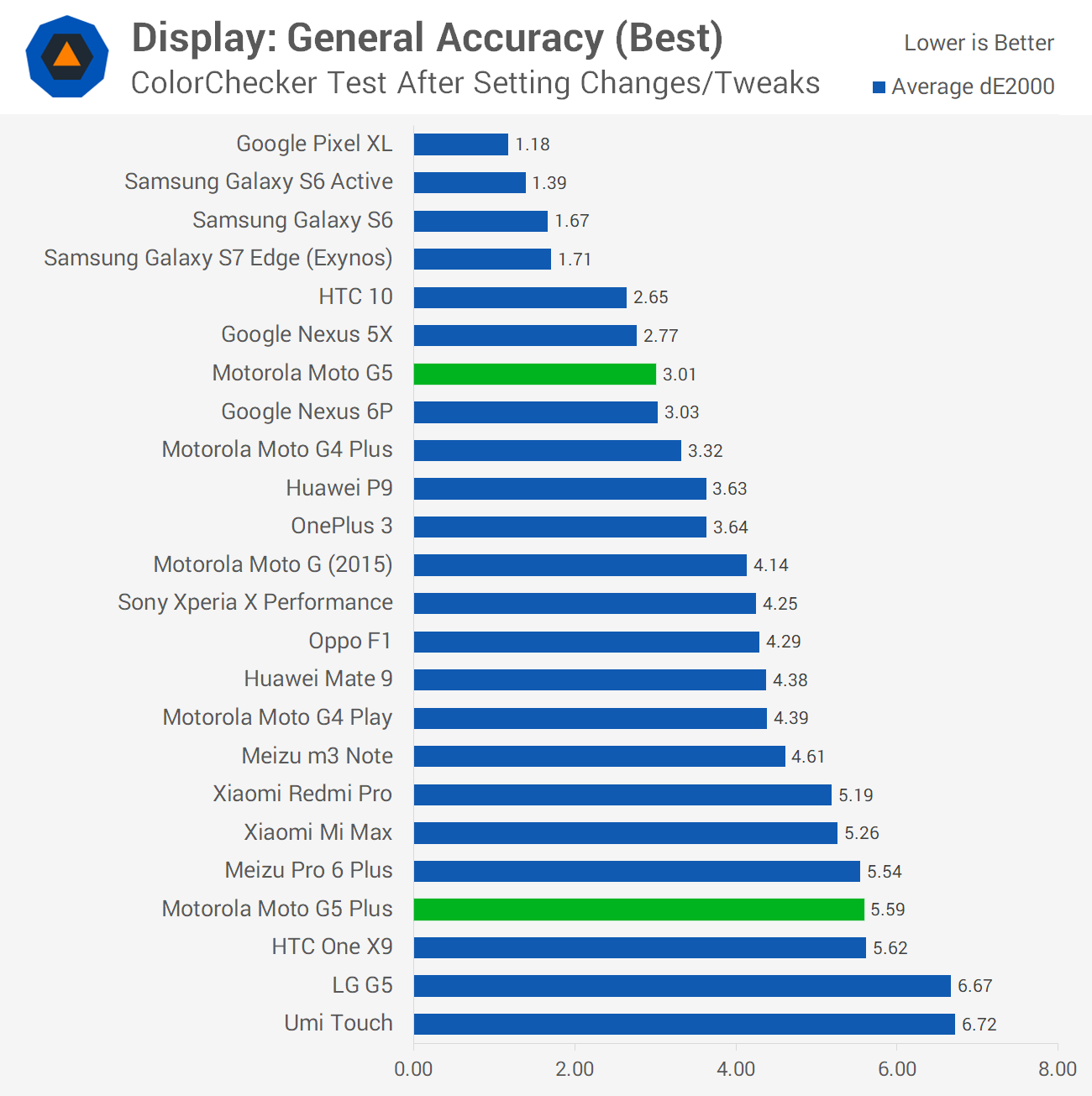
Both phones are set to the 'vibrant' display mode by default, though you can change this in the display settings to a 'standard' mode. Oddly, switching from vibrant to standard degrades the performance of the G5 Plus' display, however it improves the performance of the G5. Again, the G5 doesn't become perfectly accurate when switched to the standard mode, but accuracy improves and the display still looks great in the process.
In an ideal world, you'd expect that a more expensive handset would come with a superior (or at least equal) display relative to its cheaper counterpart. That is not the case with the Moto G5 line.
